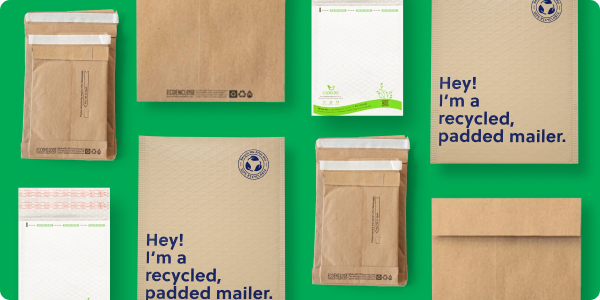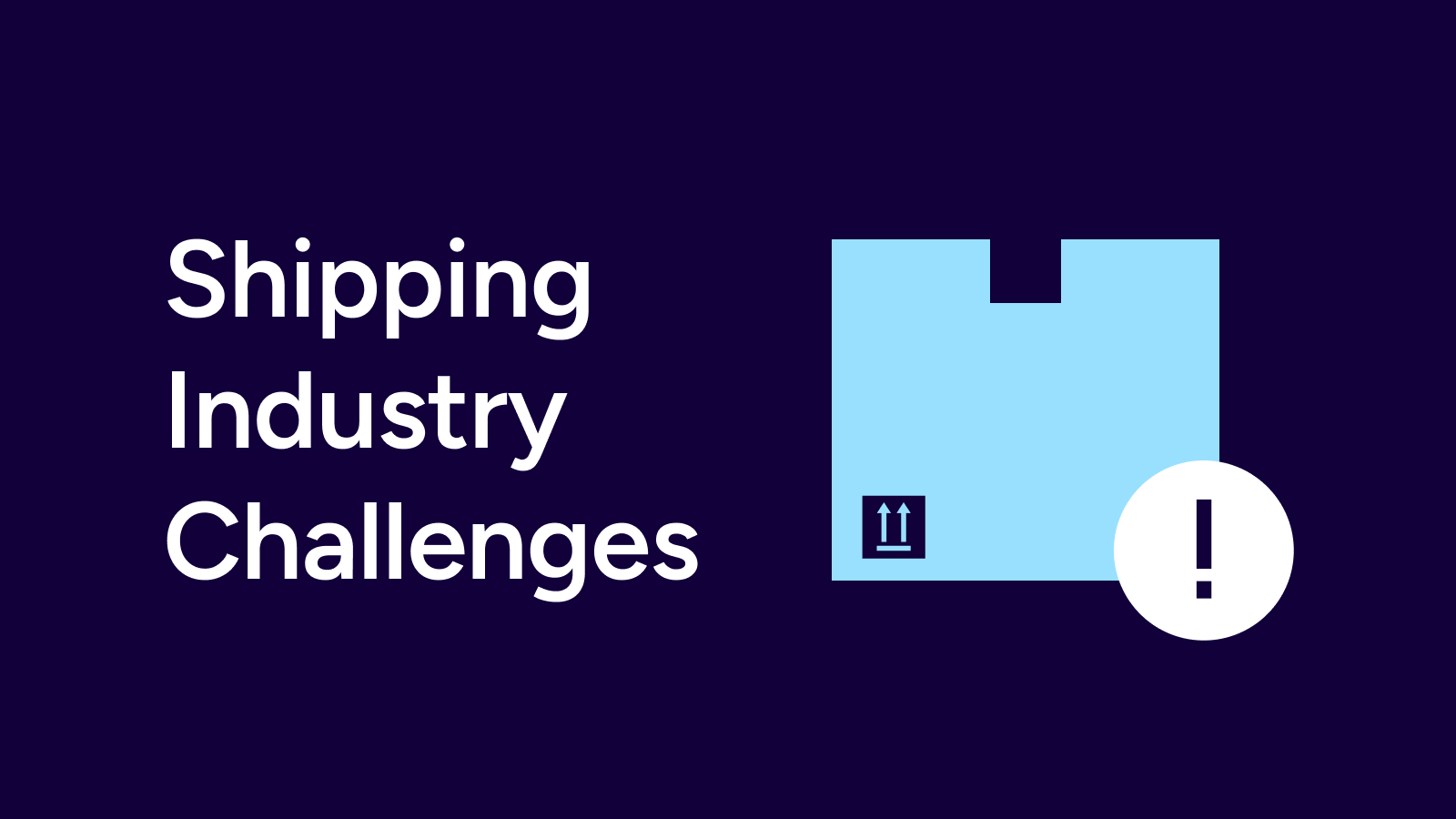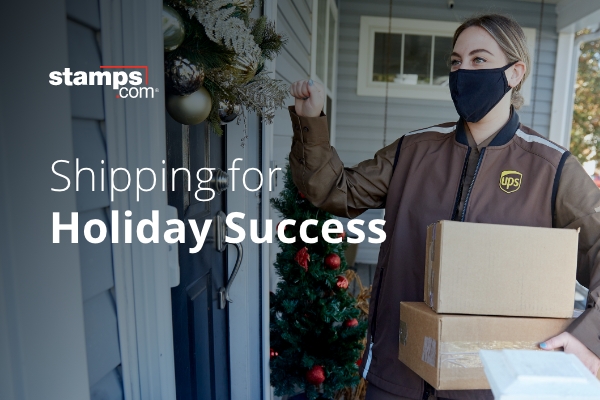Stamps.com recently held a webinar on tips for online retailers to increase revenue during the holidays that was presented by e-commerce leader Volusion. If you missed the webinar, watch the recording below:
[field name=iframe]
During the webinar, we had a ton of great questions regarding return shipping policies, email frequency and site customization for the holiday rush. Matt Winn from Volusion has answered the top 10 questions below:
Question from Jonathan: For return shipping, what is the best way to coordinate the return shipping charge?
Answer from Matt Winn at Volusion: The most common practice from big-brand online retailers is to provide them with a pre-paid return shipping label. This makes the process much easier for both the merchant and consumer, as there are much fewer steps for both parties to follow. There’s also ways, based on your shipping provider, for customers to receive an email with a link to the return shipping label, of which they print and apply to the package. Ultimately the decision fully depends on you and your business, but it seems that providing the label, either on paper or digitally, is a sound method.
Question from Shauna: Does the Volusion SSL’s (site security certicate) apply to shoppers buying on their mobile phones?
Answer from Matt Winn at Volusion: Any SSL used on a Volusion website will also apply to purchases made on a mobile device. You’re essentially working with a mobile-optimized version of your current store, not a fully independent mobile website, so the settings and security measures provided by your SSL are the same.
Question from Nathan: When is the last day a holiday campaign should run until – should I run my holiday promotion through New Years?
Answer from Matt Winn at Volusion: This ultimately depends on your business model, product offering and customer base, but holiday campaigns can run past the holidays, as the term “holidays” is relative to many different people. If you do decide to run a holiday campaign a bit further than normal, it’s usually a good idea to frame it as such, calling it a “post-holiday sale” or even a “ring in the New Year with savings” approach to prevent any customer confusion.
Post-holiday campaigns are especially useful if you have excess inventory that you’d like to clear, or if your metrics indicate that you can continue the momentum from a successful holiday selling season a bit longer.
Question from Dartanya: How do you submit a site map to the search engines for better SEO?
Answer from Matt Winn at Volusion: Fortunately this is a pretty simple process and is dependent on the specific search engine. To get started, you’ll want to generate an XML Sitemap, of which you can typically do directly from your ecommerce software platform. Once you have that, you’ll want to find specific instructions from each search engine. Get specific information on submitting your sitemap to Google.
Question from Ed: How often should you send email newsletters during the holiday season without annoying customers?
Answer from Matt Winn at Volusion: Excellent question, which again depends on your individual business situation and customer base. For some context, in 2010, 89% of top online retailers increased the number of promotional emails sent in November and December by an average of 47% as compared to earlier months. This increase led to an average of 17.3 retailer emails being sent each month during November and December of that year. Naturally, if your customers are being hit with more and more email messages, you should be increasing your sends to keep up – but be careful on how drastically you increase your email volume. For example, if you typically send one email per month during January to October and then send 17 messages/month during the holiday season, you’ll likely overwhelm your customers. The main takeaway here is to focus on the trends of your email metrics – as you increase the number of sends, does your unsubscribe rate increase greatly? Does your open rate decrease? Your click through rate? Unfortunately there’s no exact number of emails you should be sending, but there are certain thresholds you should be aware of to help guide your decision.
Question from Dale: How can we overcome Facebook’s new policy of throttling our brand pages by making us pay to show posts to our fans? For example we have over 12,000 fans but only a few hundred actually see our posts?
Answer from Matt Winn at Volusion: If it makes you feel any better, every brand under the sun is experiencing this problem, and it’s all due to Facebook’s EdgeRank algorithm. In a nutshell, you have a specific EdgeRank with each of your fans, which dictates whether or not your posts show up in their newsfeed.
To increase your EdgeRank, you need to increase engagement across your fan base. Of course, a quick way to do this is to use Promoted Posts and Facebook Offers, which are a proven way of increasing exposure. I personally think that there’s nothing wrong with paying a bit of extra cash to ensure that your content is actually being seen by your fans, but if you’re opposed to it or it’s out of budget, you’ll need to increase your reach organically. To do so, check out some of the tips I’ve put together, along with a full explanation of this issue, in this post: The Most Important Facebook Metric You Choose to Ignore.
Question from Sye: Do you recommend a new category for holidays or changing your SEO tags on your regular products?
Answer from Matt Winn at Volusion: I recommend a mixture of both for most brands. As discussed in the webinar, creating holiday-specific categories, such as “Stocking Stuffers” or “Holiday Clearance” is a great way to cater to hurried shoppers and bargain hunters. Remember, there are tons of different buying types out there, so your job as an online business owner is to make sure that you’re appealing to each of them as best you can. The nice thing about new holiday categories is that you can start fresh from an SEO perspective and really hammer away at holiday-specific keywords. Regarding your other products and categories, you can absolutely make holiday adjustments, particularly in your product descriptions. Regarding your tags, one of the quickest adjustments can be in your title tag and meta description, but make sure you strike the balance between going completely overboard and staying stagnant.
Question from Juan: If offering free shipping on return items, how do you recommend to account for this potential cost?
Answer from Matt Winn at Volusion: I really wish I had a specific answer for you, but there are so many ways that you can account for this (or really any) additional cost. My first piece of advice is to make absolutely sure that you can afford to offer free return shipping – how much will it actually cost you?
Think about it in three stages: best case (very few free returns), best guess (an average amount of returns based on your normal return activity) and worst-case scenario (a huge influx of returns). Once you have a clearer understanding of the cost from these perspectives, you can better plan for how you’ll account for them. Keep an eye on your margins across your product line, and if you think that offering free shipping will put you underwater or severely impact your profitability, think twice about offering the promotion in the first place.
Question from Suzy: What is the best way to get your coupon codes out to the public?
Answer from Matt Winn at Volusion: Social media and email are two of the most effective ways to do so, particularly to your current customer base. Remember that it’s much easier to get shoppers to return to your site than to attract them there in the first place. With this in mind, utilize your contact database to the fullest to share your coupons with those that are most likely to actually use them. Another good trick is to reach out to influential bloggers in your space and build connections with them. Some bloggers will accept money to publicize your promotions on their site, while others will take the tip and share it for free. You can also build out an affiliate network, in which you pay commissions to third-parties who direct sales and traffic to your site.
Question from Suzy: Is it better to have a blog that is hosted on your website or on a site such as tumblr or blogger.com?
Answer from Matt Winn at Volusion: Most experts tend to say that having a blog that’s hosted in your website is better for SEO purposes, as you’re helping to build your overall domain authority by continuously publishing fresh, new content from your domain on a frequent basis. As a whole, however, having a blog in the first place is the most important thing, as you should be linking back and forth between your website and blog. If you’re able to have a blog that’s on the same domain (sub-domain or sub-directory) as your website, that’s great, but I’d focus more on creating a high quality blog that attracts new users first.

Matt Winn is a Social Media Manager at Volusion, an industry-leading e-commerce software that powers online businesses for over 40,000 customers. Serving as the chief blogger for Volusion’s E-commerce Blog, Matt has written hundreds of articles on all things e-commerce, ranging from social media to web design. Join him each week on Volusion’s YouTube channel for Two Minute Tuesdays, where you’ll receive two minutes of e-commerce advice to bolster your online success. You can also receive e-commerce news and tips on Twitter @volusion.


